
Let’s face it. Sometimes, our cars let us down in spectacular, soul-crushing fashion. We’ve all seen those shiny advertisements, brimming with promises of freedom, reliability, and that irresistible new car smell. Vehicle manufacturers roll out cars that look incredibly promising on paper, only for them to consistently fall short of the hype once they’re actually parked in your driveway.
It’s a truly bitter pill to swallow after you’ve spent tens of thousands of dollars, or committed to a multi-year car loan, only to develop a severe case of buyer’s remorse. But here’s the unvarnished truth: it happens all too often. In an era where new and used car prices seem to reach new stratospheric heights with every passing month, understanding what you’re truly getting into is more crucial than ever before.
Making a buying decision based solely on dazzling exterior aesthetics and impressive-sounding specs can lead you straight into a world of automotive headaches and financial woes. That’s why we’re taking a deep dive into the collective wisdom – or rather, the collective regret – of other vehicle owners. Learning from their costly mistakes is one of the smartest ways to make sure you make better choices. So, buckle up as we expose 15 vehicles that countless owners wish they had never, ever purchased.
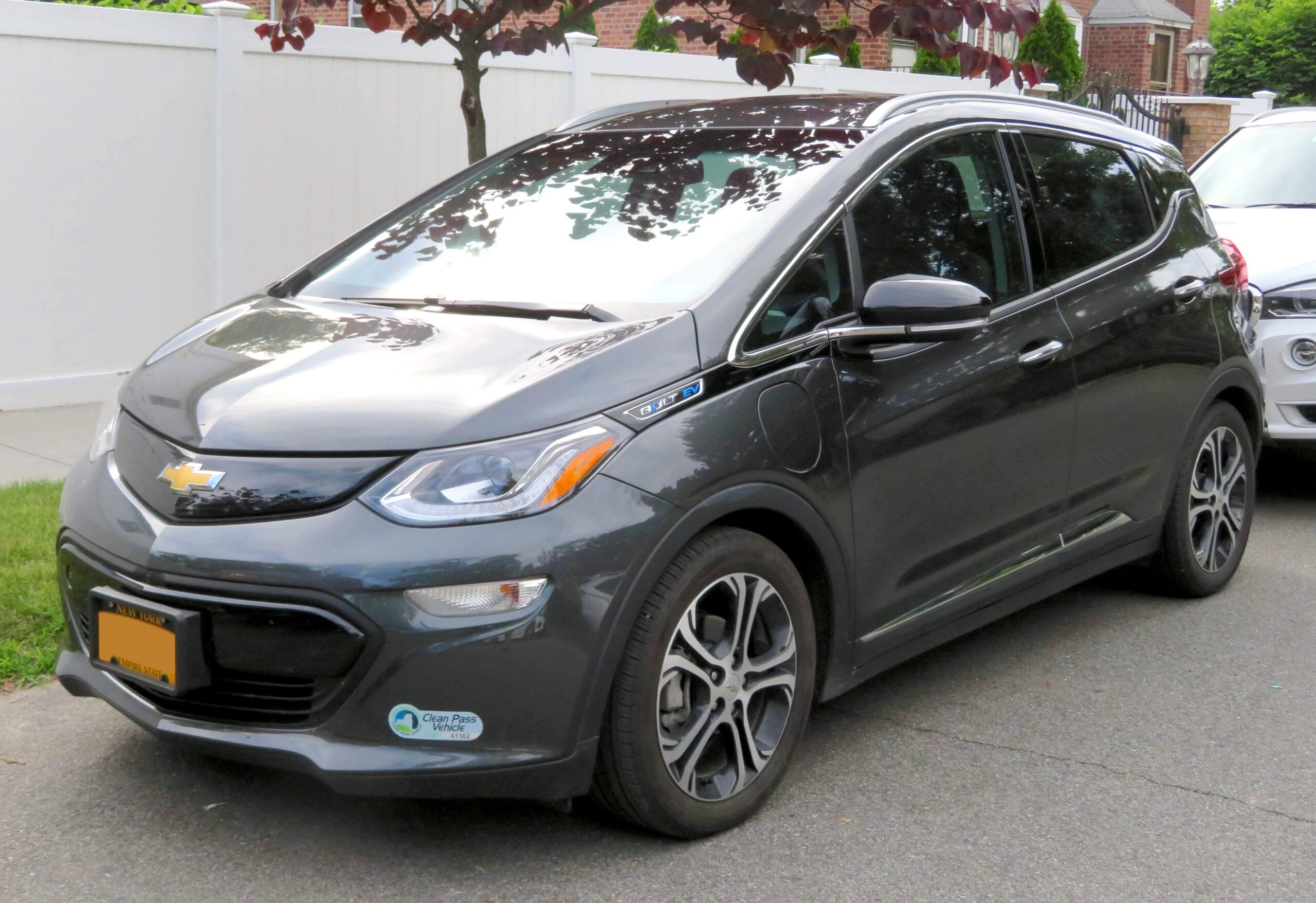
1. **Chevrolet Bolt**General Motors’ Chevrolet Bolt stepped onto the electric vehicle stage with a lot of buzz, earning praise for its commendable affordability and a respectable driving range that made EV ownership seem more accessible. However, despite these initial accolades, the Bolt has unfortunately found itself plagued with a multitude of problems, becoming a poster child for the unforeseen challenges that can arise with new automotive technology.
The most infamous issue, without a doubt, has been the Bolt’s alarming battery-related fires. This critical flaw led to massive, widespread recalls in both 2020 and 2021, sending a tremor through the EV community and prompting serious questions about battery safety. The root of this terrifying problem was traced back to the lithium-ion batteries manufactured by LG, which were found to be susceptible to short-circuiting, overheating, and, in the worst cases, igniting into dangerous flames.
But the battery problem, as catastrophic as it was, wasn’t the Bolt’s only Achilles’ heel. Owners also frequently reported a “so-so” ride quality, indicating that the driving experience itself was far from stellar. Furthermore, space for rear passengers was often criticized as inadequate, compromising its appeal as a practical family vehicle. And when it came to handling, the consensus remained lukewarm, suggesting that the car simply didn’t inspire confidence or enjoyment on the road. It seems the Bolt’s initial promise was quickly eclipsed by a litany of frustrations.
Car Model Information: 2023 Chevrolet Bolt EUV FWD Premier
Name: Chevrolet Bolt EV
Caption: 2022 Chevrolet Bolt EV
Manufacturer: General Motors
Production: 2016–2023
ModelYears: 2017–2023
Class: Subcompact car
BodyStyle: hatchback
Layout: Front-engine, front-wheel-drive layout
Predecessor: Chevrolet Spark EV
Categories: 2020s cars, All Wikipedia articles in need of updating, All articles containing potentially dated statements, All articles to be merged, All articles with unsourced statements
Summary: The Chevrolet Bolt EV (marketed in Europe as Opel Ampera-e) is a battery electric subcompact hatchback manufactured and marketed by General Motors under its Chevrolet brand from late 2016 until late 2023, with a brief hiatus between mid-2021 and early 2022.
The first-generation Bolt was developed and manufactured with LG Corporation. Sales of the 2017 Bolt began in California in December 2016; it was released nationwide and international markets release in 2017. A rebadged European variant was marketed as the Opel Ampera-e in mainland Europe. In 2017, the Bolt was the second-best-selling plug-in car in the United States. It was named the 2017 Motor Trend Car of the Year, the 2017 North American Car of the Year, an Automobile magazine 2017 All Star, and was listed in Time magazine’s Best 25 Inventions of 2016. The Ampera-e was discontinued after 2018. By the end of 2020, GM had sold 112,000 Bolt and Ampera-e cars worldwide. The first-generation Bolt had been subject to at least three recalls due to battery fire risks.
In mid-2023, GM officials said they would discontinue the Bolt; after outcry, they announced plans for a next-generation model. The second-generation Bolt, based on the Chevrolet Bolt EUV, was unveiled on October 9, 2025 and will go on sale in 2026 as a 2027 model.
Get more information about: Chevrolet Bolt
Buying a high-performing used car >>>
Brand: Chevrolet Model: Bolt
Price: $22,992 Mileage: 23,569 mi.
Read more about: Rev Up Your Restoration: The Ultimate Guide to the Best Free Online Forums for Classic Car Enthusiasts
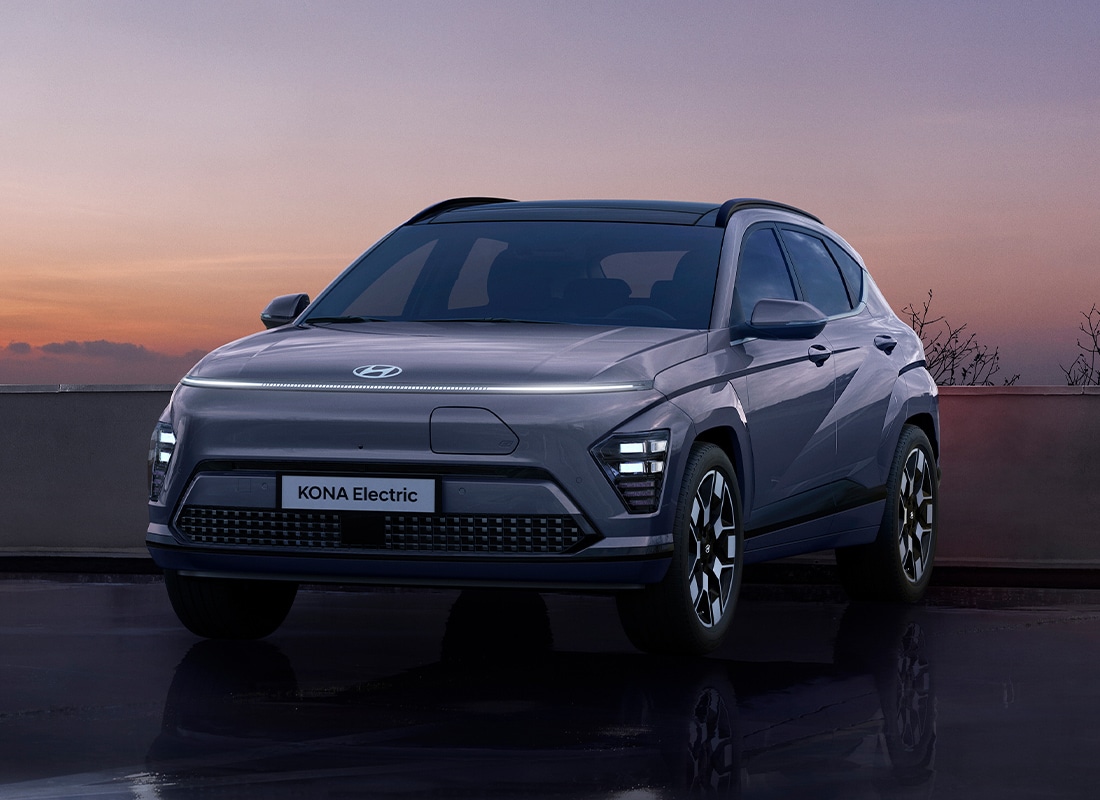
2. **Hyundai Kona Electric**Hydraulic has been on quite the roll lately, consistently rolling out a string of interesting and generally well-received electric vehicles that have captured the imagination of many. But even the best automotive chef can serve up a clunker now and then, and in this particular case, Exhibit A for a less-than-stellar offering is none other than the Hyundai Kona Electric.
Just like its Chevrolet counterpart, the Kona Electric has an unfortunate history marred by battery fires and subsequent recalls. This isn’t just a minor blip on the radar; the carmaker felt compelled to issue a worldwide recall in both 2020 and 2021, taking drastic measures to “nip the fire risks in the bud” by diligently replacing battery packs in all affected EVs. It’s a stark reminder that even innovative electric vehicles aren’t immune to serious, potentially dangerous, design or manufacturing flaws.
However, for many owners, the battery issues, as significant as they were, proved to be “just the tip of the iceberg.” The phrase “Buyer beware!” wasn’t just a catchy tagline; it became a lived reality for those who discovered a host of other problems lurking beneath the surface. These other unaddressed complications meant that even with new battery packs, the Kona Electric still left a lingering sense of disappointment and regret among its owners, who had expected a seamless and reliable EV experience.
Car Model Information: 2023 Honda Civic Sport
Name: Hyundai Kona
Caption: Hyundai Kona N Line (SX2)
Manufacturer: Hyundai Motor Company
Aka: Hyundai Kauai (Portugal)
Production: 2017–present
ModelYears: 2018–present
Class: Subcompact crossover SUV
BodyStyle: SUV
Layout: ubl
Categories: 2020s cars, All-wheel-drive vehicles, All Wikipedia articles in need of updating, All Wikipedia articles written in British English, Articles containing Chinese-language text
Summary: The Hyundai Kona is a subcompact crossover SUV produced by the South Korean manufacturer Hyundai. The first-generation Kona debuted in June 2017 and the production version was revealed later that year. It is positioned between the Venue or Bayon and the Tucson in Hyundai crossover SUV line-up. The battery electric version called the Kona Electric (or Kona EV) was first launched in South Korea during the first half of 2018 and rolled out gradually worldwide afterwards.
Get more information about: Hyundai Kona
Buying a high-performing used car >>>
Brand: Hyundai Model: Kona Electric
Price: $26,475 Mileage: 10,075 mi.
Read more about: Navigating the Wild: The Best 2025 SUVs Packed with Off-Roading Prowess for American Adventurers
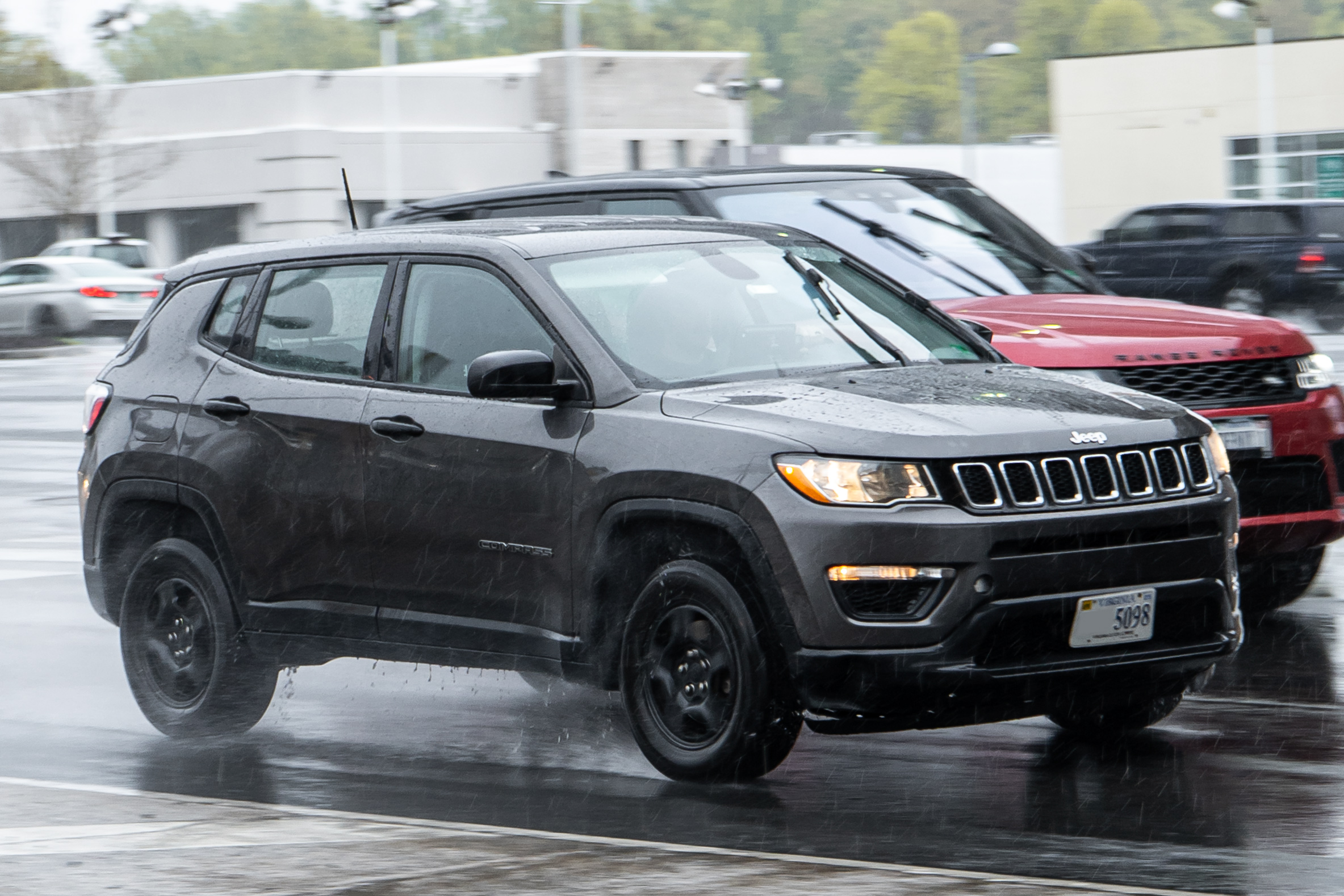
3. **Jeep Compass**Ah, the Jeep Compass. On the surface, it’s a compact SUV that promises a blend of rugged capability and urban practicality. But if you’re looking to steer clear of what many owners have affectionately—or perhaps, painfully—dubbed a “migraine headache on wheels,” then you’d be wise to keep a healthy distance from this particular model. The Compass, across various model years, has unfortunately amassed a reputation for some truly serious issues that have left owners utterly frustrated.
One of the most common and persistent complaints echoing through owner forums revolves around its transmissions. Both the continuously variable transmission (CVT) and the conventional 9-speed automatic transmissions have been singled out for their abysmal performance. Owners recount stories of “herky-jerky shifting” that makes for an unsettling ride, along with terrifying reports of “catastrophic failure,” leaving drivers stranded and staring down hefty repair bills. It’s hardly the robust reliability one expects from a brand synonymous with off-road prowess.
And if dodgy transmissions weren’t enough to sour the ownership experience, the Compass doesn’t stop there. Further aggravating its owners are consistent reports of poor engine performance, which translates to a lack of power and responsiveness when you need it most. Excessive oil consumption has also become a frequent headache, forcing owners into more frequent and costly top-ups. To top it all off, persistent electrical system issues add another layer of frustration, demonstrating that the Compass often falls short on fundamental engineering and quality control.
Car Model Information: 2024 Jeep Compass Latitude
Name: Jeep Compass
Caption: 2019 Jeep Compass
Manufacturer: Jeep
Production: 2006–present
ModelYears: 2007–present
Class: Compact crossover SUV
BodyStyle: SUV
Layout: Front-engine, front-wheel-drive layout
Chassis: Unibody
Categories: 2010s cars, 2020s cars, All-wheel-drive vehicles, All Wikipedia articles written in American English, Articles with short description
Summary: The Jeep Compass is a compact crossover SUV, introduced in 2006 for the 2007 model year. The first generation Compass and Patriot, its rebadged variant, were among Jeep’s first crossover SUVs. The second-generation Compass debuted in September 2016 in Brazil and at the Los Angeles International Auto Show in November 2016, sharing a modified platform with the Renegade. It is positioned between the smaller Renegade and the larger Cherokee globally or the Commander in South America. The third-generation Compass debuted in May 2025, built on the STLA Medium by Stellantis, shared with other PSA Groupe vehicles.
Get more information about: Jeep Compass
Buying a high-performing used car >>>
Brand: Jeep Model: Compass
Price: $19,988 Mileage: 53,969 mi.
Read more about: Drove it Regretted it: 12 Compact Models That Made Owners Question Their Judgment on the First Commute.
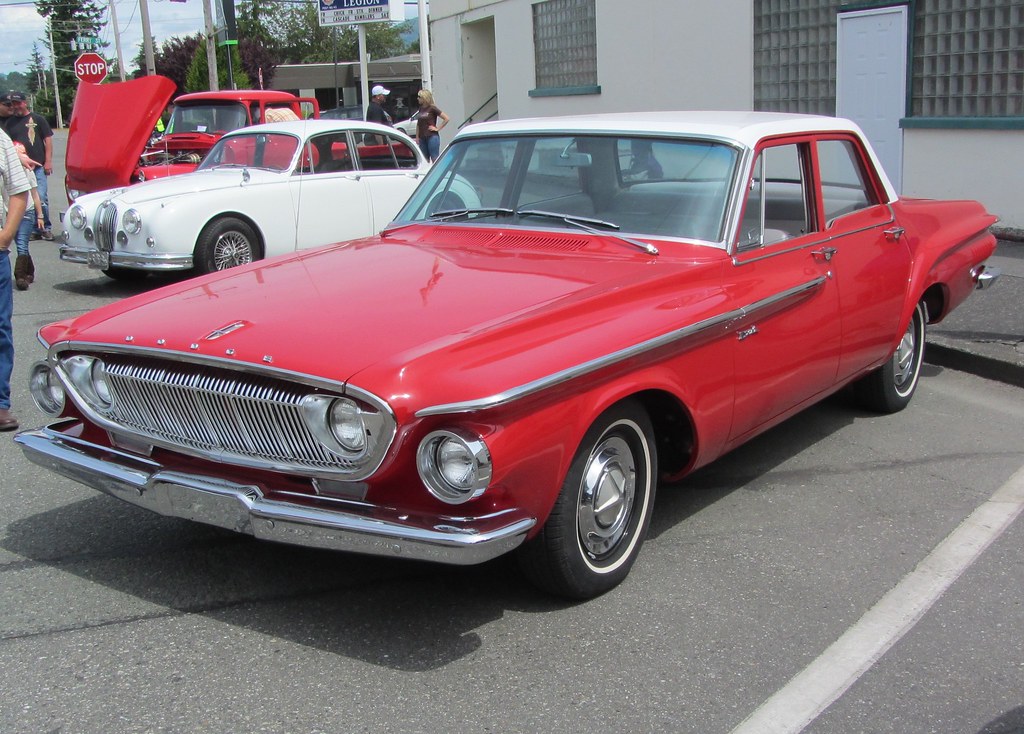
4. **Dodge Dart**The Dodge Dart, a compact sedan that aimed to deliver practicality and efficiency, quickly became infamous for having what many owners described as “full-size car problems.” When delving into the litany of issues that plagued this vehicle, the natural question that comes to mind is, “Where do we begin?” because the list of grievances is extensive and covers nearly every critical component of the car.
From the moment you attempt to put power to the pavement, the transmission often proved to be a source of immediate frustration, delivering unreliable and inconsistent shifts. The engine itself was no stranger to complaints, with issues ranging from performance inadequacies to outright failures. Even components that should provide a modicum of comfort and safety, like the suspension and the brakes, frequently left owners wishing they had never signed the paperwork.
Such widespread dissatisfaction is not merely anecdotal. According to the venerable Consumer Reports, a staggering “around six in 10 buyers say they are not satisfied with the vehicle.” This isn’t just a handful of disgruntled customers; it’s a significant majority, painting a clear picture of pervasive and profound buyer’s remorse. The Dodge Dart, it seems, was a compact car that managed to deliver a full-sized helping of disappointment.
Car Model Information: 2015 Dodge Dart SXT
Name: Dodge Dart
Caption: 1966 Dodge Dart GT 2-door hardtop
Manufacturer: Dodge
Production: 1959–1976 (US market)
ModelYears: 1960–1976 (US market)
Class: Full-size
Layout: FR layout
Predecessor: Dodge Coronet#Fourth generation (1957–1959)
Related: Plymouth Valiant,Chrysler Valiant,Dodge Phoenix
Successor: Dodge Aspen,Dodge Diplomat,Talbot Tagora
Categories: 1970s cars, All articles with unsourced statements, Articles with short description, Articles with unsourced statements from December 2023, Articles with unsourced statements from May 2025
Summary: The Dodge Dart is a line of passenger cars produced by Dodge from the 1959 to 1976 model years in North America, with production extended to later years in various other markets.
The production Dodge Dart was introduced as a lower-priced full-size model in 1960 and 1961, but became a mid-size car for one model year for 1962, and was then reduced to a compact for two generations, from 1963 to 1976.
Chrysler had first used ‘Dart’ name plates on two Italian styled show cars, in 1956 and 1957, before it became a Dodge model name. The Dart nameplate was resurrected for a Fiat-derived compact car that was introduced in 2012.
Get more information about: Dodge Dart
Buying a high-performing used car >>>
Brand: Dodge Model: Dart
Price: $9,995 Mileage: 143,082 mi.
Read more about: Parking Lot Purgatory: 14 Vehicles Owners Deeply Regret After Years of Ownership
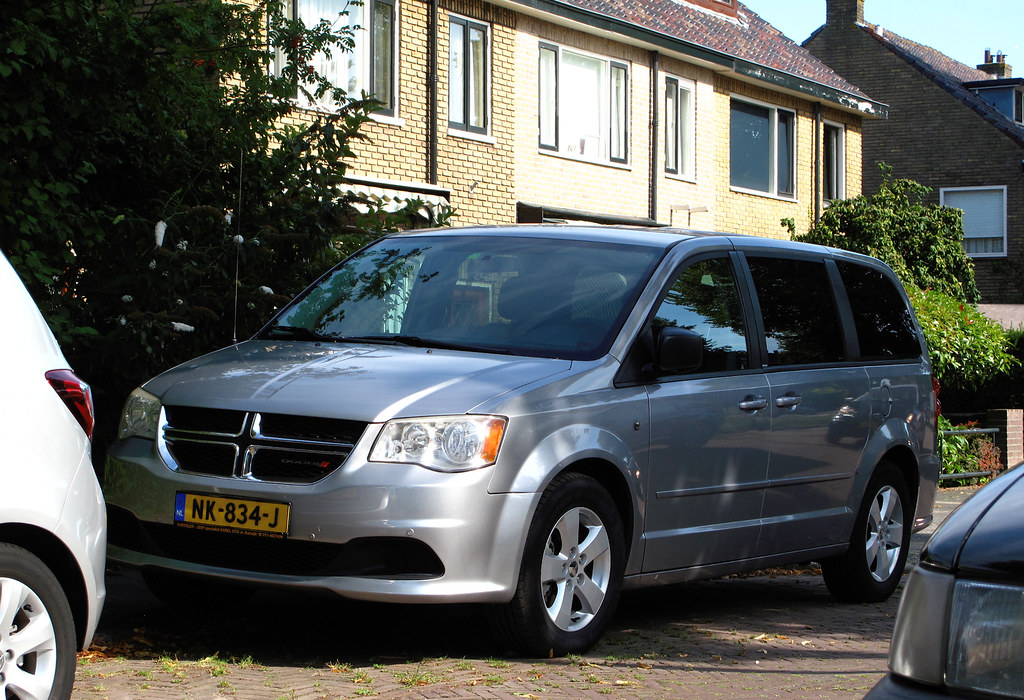
5. **Dodge Grand Caravan**For many American families, the Dodge Grand Caravan has been a fixture in countless driveways, serving as the faithful, if sometimes beleaguered, hauler of kids, pets, and countless memories. While some of those memories may indeed be fond, the reality of owning a Grand Caravan is often described as “anything but smooth driving.” It’s quite challenging to rely on a vehicle as your primary family, pet, and “thing” hauler when a glaring, recurring problem threatens to derail every trip.
Indeed, “transmission failure is a common complaint from owners,” transforming a practical vehicle into a ticking time bomb of potential breakdowns. The unfortunate truth is that these transmissions don’t usually go “kaput” without plenty of warning. Before giving up the ghost entirely, owners frequently report a frustrating array of issues, including “delayed gear engagement, rough shifting, and slipping,” turning mundane commutes into nerve-wracking experiences of uncertainty and mechanical protest.
Adding insult to injury, the woes of the Grand Caravan extend beyond its notoriously fragile transmissions. “Many owners also complain about electrical system problems and heavy oil consumption,” which contribute to a constant stream of unexpected expenses and inconvenient trips to the mechanic. If given the chance to “rewind time and have a do-over,” it’s clear that a significant number of Dodge Grand Caravan owners would gladly choose something, anything, else to ferry their precious cargo.
Car Model Information: 2023 Honda Civic Sport
Caption: 2011 Dodge Grand Caravan Mainstreet
Name: Dodge Grand Caravan
Manufacturer: Chrysler Corporation,Daimler AG,Chrysler LLC,Chrysler Group LLC,FCA US LLC
Class: Minivan
Layout: FF layout,F4 layout
Production: November 2, 1983 –August 21, 2020
ModelYears: 1984–2020
Related: Plymouth Voyager,Chrysler Town & Country (minivan),Dodge Mini Ram,Chrysler Voyager,Volkswagen Routan
Assembly: Windsor, Ontario,Fenton, Missouri,Fenton, Missouri,Fuzhou
Successor: Dodge Journey,Chrysler Voyager
Categories: All-wheel-drive vehicles, All articles with unsourced statements, Articles with short description, Articles with unsourced statements from December 2017, Articles with unsourced statements from May 2009
Summary: The Dodge Caravan is a series of minivans manufactured by Chrysler from the 1984 through 2020 model years. The Dodge version of the Chrysler minivans, was marketed as both a passenger van and a cargo van (the only version of the model line offered in the latter configuration). For 1987, the model line was joined by the long-wheelbase Dodge Grand Caravan. Produced in five generations across 36 model years, the Dodge Caravan is the second longest-lived Dodge nameplate (exceeded only by the Dodge Charger). Initially marketed as the Dodge counterpart of the Plymouth Voyager, the Caravan was later slotted between the Voyager and the Chrysler Town & Country. Following the demise of Plymouth, the model line became the lowest-price Chrysler minivan, ultimately slotted below the Chrysler Pacifica.
Sold primarily in the United States and Canada, the Dodge Caravan was also marketed in Europe and other international markets under the Chrysler brand (as the Chrysler Voyager or Chrysler Caravan). From 2008 onward, Dodge marketed the model line only as the Grand Caravan; Ram Trucks sold a cargo-only version of the model line as the Ram C/V Tradesman. The model line was also rebranded as the Volkswagen Routan from 2009 through 2014.
After the 2020 model year, the Dodge Grand Caravan was discontinued, ending production on August 21, 2020. For 2021 production, the Grand Caravan nameplate was moved to Chrysler, which used it for a Canadian-market version of the Chrysler Pacifica (in the United States, the exact vehicle was marketed as the Chrysler Voyager).
For its entire production run, the Dodge Caravan/Grand Caravan was manufactured by Chrysler Canada (now Stellantis Canada) at its Windsor Assembly facility (Windsor, Ontario). From 1987 until 2007, the model line was also manufactured by Chrysler at its Saint Louis Assembly facility (Fenton, Missouri). Since their introduction in late 1983, over 14.6 million Chrysler minivans have been sold worldwide (including export versions and versions sold through rebranding).
Get more information about: Dodge Caravan
Buying a high-performing used car >>>
Brand: Dodge Model: Grand Caravan
Price: $26,475 Mileage: 10,075 mi.
Read more about: Parking Lot Purgatory: 14 Vehicles Owners Deeply Regret After Years of Ownership
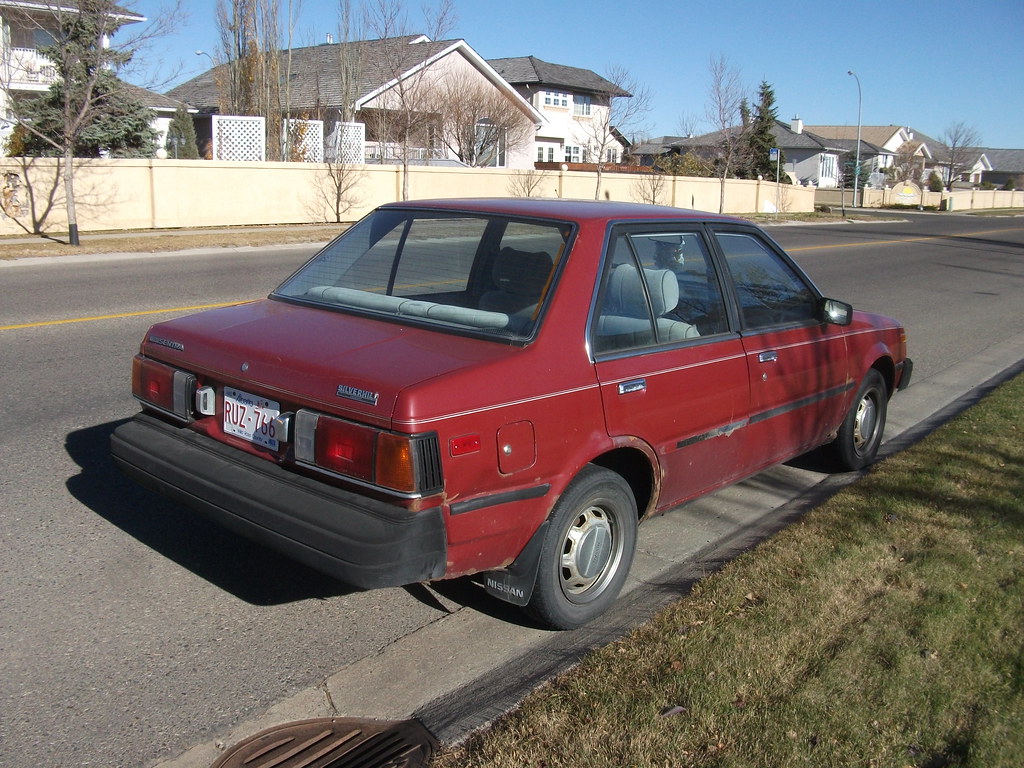
6. **Nissan Sentra**The Nissan Sentra, like many models from long-standing manufacturers, has certainly had its moments of glory, with some model years actually earning a decent reputation. However, and this is a big however, certain iterations of this compact sedan were, to put it mildly, “horrific.” If you’re in the market for a reliable daily driver, you’d be well-advised to “stay away from the ones made from 2013 to 2019” as these particular years are legendary for all the wrong reasons.
The primary culprit behind the Sentra’s fall from grace during this period was the “infamous CVT” – the continuously variable transmission – which has been a persistent “thorn in the side of many Sentra owners.” This particular transmission technology, while promising efficiency, often delivered anything but smooth operation. Instead, owners grappled with a litany of “CVT problems includ[ing] overheating, jerky acceleration, and shuddering,” turning what should be a seamless drive into a disconcerting, lurching experience.
And as if the transmission wasn’t enough to contend with, the Sentra from these years came with an additional “laundry list of issues,” including the alarming problem of engine stalling, which can be both inconvenient and dangerous. Furthermore, the vehicle was subject to “many recalls related to the vehicle’s airbags, seatbelts, brakes, and more,” painting a picture of fundamental design and manufacturing flaws that went far beyond just the powertrain. It seems the 2013-2019 Sentra was a masterclass in how to accumulate owner dissatisfaction.
Car Model Information: 2023 Nissan Sentra SV
Name: Nissan Sentra
Caption: 2021 Nissan Sentra SR (B18; Canada)
Manufacturer: Nissan
Aka: Nissan Sunny
Production: 1982–present
Class: Subcompact car
Predecessor: Nissan Sunny#B310
Categories: 1990s cars, 2000s cars, 2010s cars, 2020s cars, All Wikipedia articles written in American English
Summary: The Nissan Sentra is a series of automobiles manufactured by the Japanese automaker Nissan since 1982. Since 1999, the Sentra has been categorized as a compact car, while previously it occupied the subcompact class. Until 2006, Sentra was a rebadged export version of the Japanese Nissan Sunny, but since the 2013 model year, Sentra is a rebadged export version of the Sylphy. The Sentra nameplate is not used in Japan. Many other countries in Latin America sell their versions of the Sunny as the Sentra. In Mexico, the first three generations of the Sentra were known as the Nissan Tsuru (Japanese for crane), and the B13 model was sold under that name until 2017, alongside the updated models badged as Sentra.
In North America, the Sentra currently serves as Nissan’s compact car, despite being rated as a mid-size car by the EPA due to its interior volume since the 2007 model year. While previous Sentras were subcompacts, the Sentra has grown over the years, with the Nissan Versa having replaced the Sentra in the entry-level area.
The Sentra name was created for Nissan by Ira Bachrach of NameLab, and Bachrach describes the origin as “Nissan wanted consumers to understand that it was quite safe even though it was small. The word Sentra sounds like central as well as sentry, which evokes images of safety.”
Get more information about: Nissan Sentra
Buying a high-performing used car >>>
Brand: Nissan Model: Sentra
Price: $19,490 Mileage: 41,832 mi.
Read more about: Drove it Regretted it: 12 Compact Models That Made Owners Question Their Judgment on the First Commute.
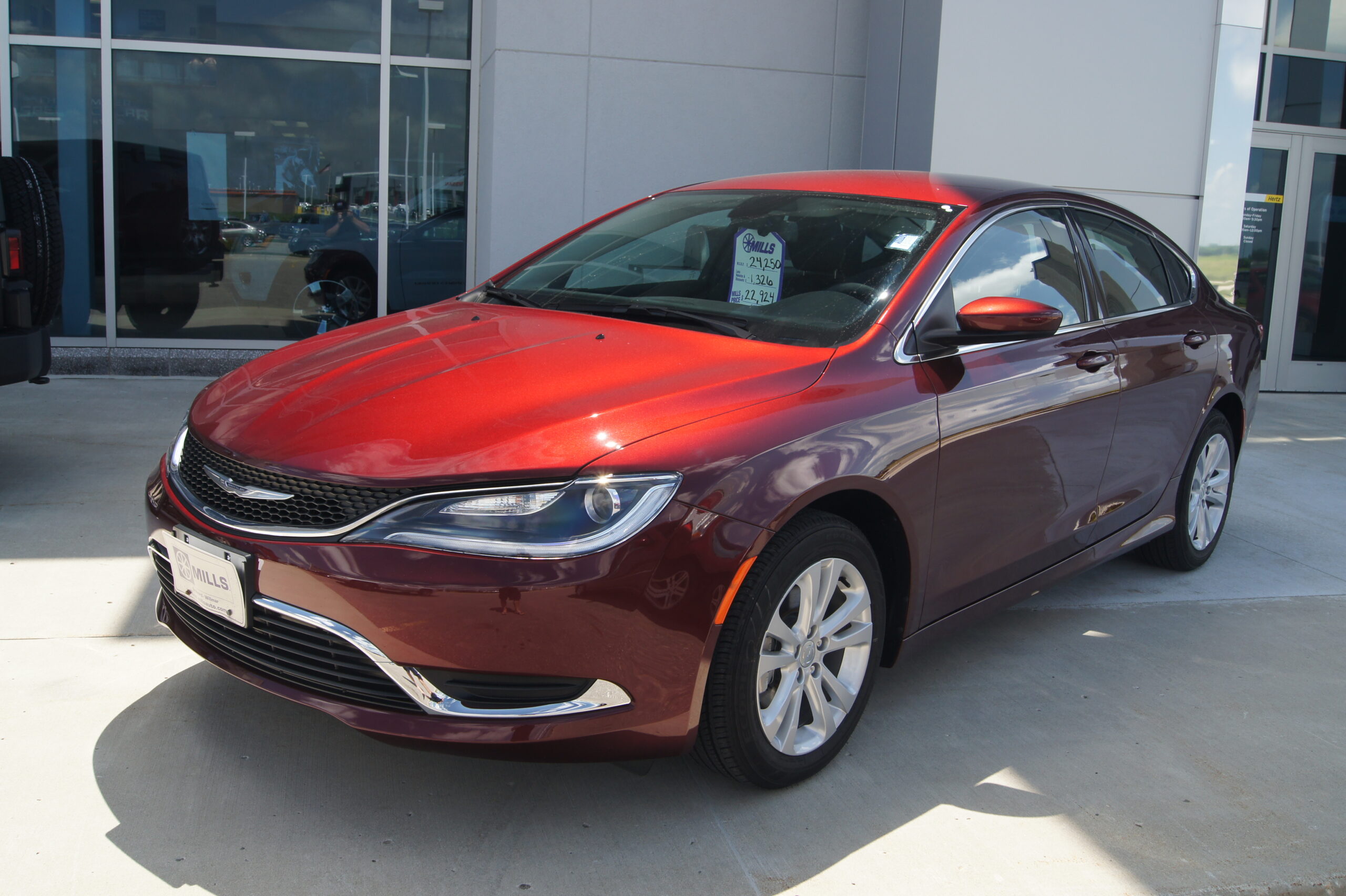
7. **Chrysler 200**The Chrysler 200, produced between 2011 and 2017, was another vehicle that, despite its attempts to capture a slice of the mid-size sedan market, found itself saddled with “many reliability issues” that quickly eroded any initial appeal. While its design aimed for a modern aesthetic, the underlying engineering often failed to keep pace, leading to a frustrating ownership experience for many.
Owners of the later models, specifically the 2015, 2016, and 2017 versions, found the 9-speed automatic transmission to be “especially problematic.” This wasn’t just a minor annoyance; for many, it was “just for starters” on a path that often led to far more severe consequences. The reality was that “transmission failure was a thing, too,” transforming a potentially inconvenient hiccup into a major, budget-busting breakdown.
Beyond the transmission woes, the Chrysler 200 also “suffers from engine performance problems,” adding another layer of mechanical disappointment to an already troubled package. These issues collectively ensured that what might have seemed like a reasonable purchase initially, rapidly devolved into a vehicle that constantly demanded attention, draining both wallets and patience. For those who bought a Chrysler 200, the promise of a dependable sedan often turned into a costly and regrettable lesson in automotive reliability.
Car Model Information: 2013 Chrysler 200 Touring
Name: Chrysler 200
Manufacturer: Chrysler
Production: 2010–2016
ModelYears: 2011–2017
Assembly: Sterling Heights, Michigan
Class: Mid-size car
Sp: us
Predecessor: Chrysler Sebring
Categories: 2010s cars, All articles with dead external links, All articles with unsourced statements, Articles with dead external links from July 2020, Articles with permanently dead external links
Summary: The Chrysler 200 is a mid-size sedan that was manufactured and marketed by Chrysler from model years 2011 to 2017 across two generations in four-door sedan and two-door convertible (first generation only) body styles.
The 200 nameplate debuted on the 200C, a prototype hybrid vehicle shown at the 2009 North American International Auto Show in Detroit and based on the Chrysler 300. The 200C concept was engineered to accept either traditional gasoline, hybrid or full-electric powertrains.
Get more information about: Chrysler 200
Buying a high-performing used car >>>
Brand: Chrysler Model: 200
Price: $7,788 Mileage: 117,030 mi.
Read more about: Under the Hood Heroes: 16 Import Cars Mechanics Secretly Adore for Bulletproof Reliability and Unsung Value

8. **Nissan Altima**The Nissan Altima, for many years, embodied the sensible sedan choice—reliable, efficient, and understated. Yet, the brutal truth for a significant chunk of owners, particularly those who shelled out cash for models between 2013 and 2019, is that this sensible choice quickly transformed into a source of constant frustration. It turns out that some Altimas were nothing short of a regrettable mistake.
The primary villain in this automotive tragedy, as with many of its Nissan brethren from that era, was the continuously variable transmission (CVT). This transmission wasn’t just problematic; it was a bona fide mess, manifesting in an array of alarming behaviors that included rough shifting, pronounced shuddering, and, in far too many cases, premature failure. The CVT, designed for smooth efficiency, instead delivered a masterclass in how to make a daily commute a nerve-wracking ordeal.
And if a failing transmission wasn’t enough to push owners towards the brink, the Altima added insult to injury with a host of other mechanical gremlins. Owners frequently reported issues with the steering system, which often felt disconnected or developed concerning noises. Adding to the financial headaches were complaints of excessive oil consumption and persistent oil leaks, forcing owners into unexpected and costly repairs that chipped away at any perceived savings from its fuel economy.
The cumulative effect of these reliability breakdowns meant that the Nissan Altima, rather than being the dependable workhorse it promised to be, became a cautionary tale of buyer’s remorse. It proved that sometimes, even a popular badge can mask fundamental engineering flaws that leave owners wishing they’d driven anything else off the lot.
Car Model Information: 2023 Nissan Altima 2.5 SV
Name: Nissan Altima
Caption: 2024 Nissan Altima SR (L34; US)
Manufacturer: Nissan
Aka: Nissan Bluebird
Production: 1992–present
Class: Compact car
Predecessor: Nissan Bluebird,Nissan Stanza
ModelYears: 1993–present
Categories: 2000s cars, 2010s cars, 2020s cars, All-wheel-drive vehicles, All Wikipedia articles written in American English
Summary: The Nissan Altima is a mid-size car manufactured by Nissan since 1992. It is a continuation of the Nissan Bluebird line, which began in 1955.
The Altima has historically been larger, more powerful, and more luxurious than the Nissan Sentra but less so than the Nissan Maxima. The first through fourth-generation cars were manufactured exclusively in the United States and officially sold in North and South America, along with the Middle East and Australia. For other markets, Nissan sold a related mid-size sedan called the Nissan Teana which was between the Altima and Maxima in terms of size. In 2013, the Teana became a rebadged version of the fifth-generation Altima.
The name “Altima” was originally applied to a top trim line of the Nissan Leopard for the Japanese market in 1986, and then to the Nissan Laurel Altima mid-size car sold in Central America and the Caribbean before 1992. In 1992, Nissan discontinued the Stanza which was a Nissan Bluebird clone, replacing it with the US-built Altima, while remaining a compact car. The first Altima was produced in June 1992, as a 1993 model. All Altima models for the North American market were built in Smyrna, Tennessee, until June 2004, when Nissan’s Canton, Mississippi plant also began producing the model to meet high demand.
Get more information about: Nissan Altima
Buying a high-performing used car >>>
Brand: Nissan Model: Altima
Price: $17,990 Mileage: 64,614 mi.
Read more about: Undervalued ’80s Imports: 9 Easy-to-Maintain Restoration Gems You Need to Know About
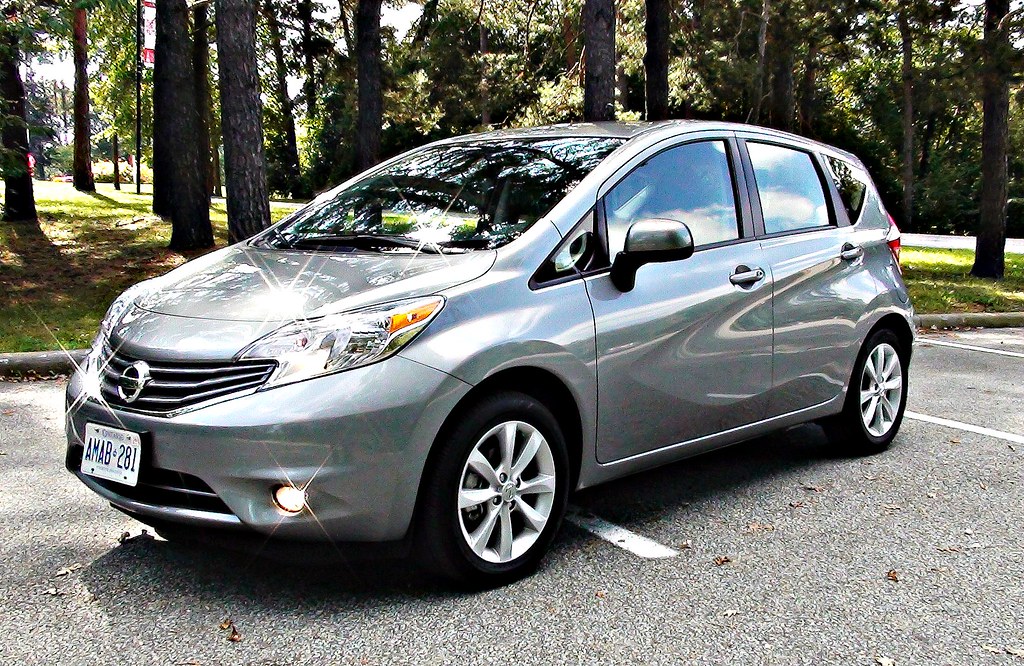
9. **Nissan Versa Note**Ah, the Nissan Versa Note. It rolled onto the scene with a compelling proposition: a super-cheap small hatchback that promised practicality on a budget. And while it certainly delivered on the “cheap” part, for a significant number of owners, that low price tag was merely a reflection of a profoundly low quality level, making it a budget disaster rather than a budget boon.
Unsurprisingly, much like other Nissan models of its ilk, the Versa Note’s Achilles’ heel was its continuously variable transmission (CVT). This particular piece of engineering frustrated owners to no end, often exhibiting erratic behavior, unresponsive acceleration, and a general lack of refinement that made driving anything but enjoyable. It was a constant reminder that sometimes, trying to save a buck upfront only leads to bigger headaches down the road.
Beyond the transmission woes, the Versa Note also suffered from what many would describe as anemic acceleration from its 1.6-liter 4-cylinder engine. This wasn’t just about winning drag races; it was about having sufficient power for merging onto highways or executing safe overtakes. The lack of grunt, combined with the questionable transmission, made for a driving experience that felt perpetually underpowered and underwhelming.
Ultimately, the Nissan Versa Note is a stark reminder that if a deal seems too good to be true, it probably is. The initial affordability quickly gives way to the reality of persistent mechanical frustrations, a lackluster driving experience, and a profound sense of regret for those who hoped to find value in its low price point.
Car Model Information: 2023 Honda Civic Sport
Categories: All set index articles, Articles with short description, CS1 Mexican Spanish-language sources (es-mx), CS1 Portuguese-language sources (pt), CS1 Spanish-language sources (es)
Summary: Nissan Versa is an automobile nameplate used by the Japanese manufacturer Nissan in the Americas for the following models:
According to a Nissan press release in 2008, “versa” is short for “versatile space” meant to imply the spaciousness of the interior and configurable cargo arrangements.
Get more information about: Nissan Versa
Buying a high-performing used car >>>
Brand: Nissan Model: Versa Note
Price: $26,475 Mileage: 10,075 mi.
Read more about: Navigating EV Battery Warranties: A Comprehensive Guide to Longest Coverage for Peace of Mind
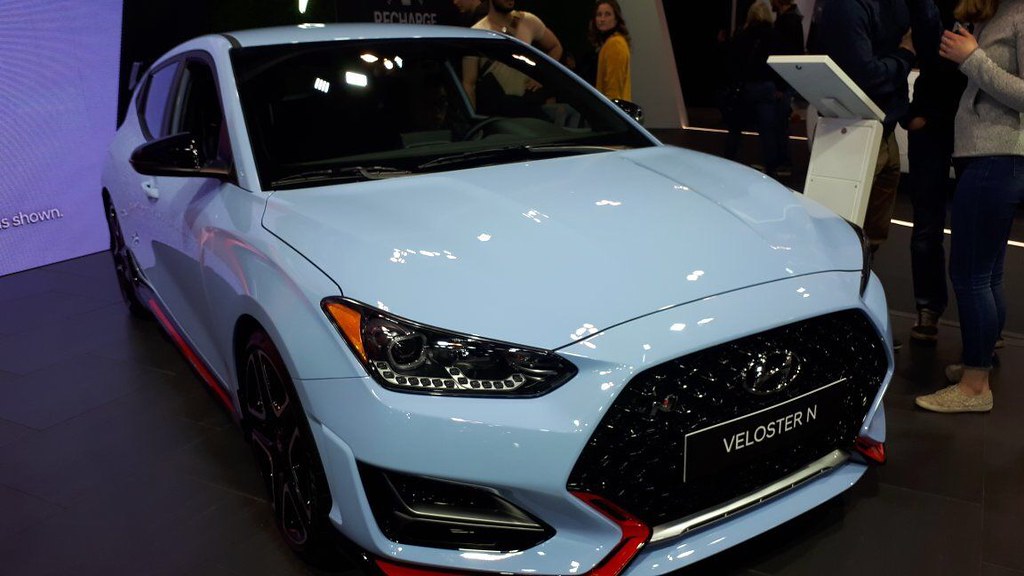
10. **Hyundai Veloster**The Hyundai Veloster burst onto the scene with a genuinely cool and distinctive styling, a quirky three-door layout, and a promise of responsive handling that suggested a fun, engaging driving experience. For a moment, it seemed like a fresh, exciting option in the compact segment. However, for a worrying number of owners, the initial charm quickly wore off as the car’s problems became increasingly hard to ignore, turning flair into frustration.
The heart of the Veloster’s issues often lay beneath its stylish hood. Owners reported significant engine problems, some of which could lead to nothing short of catastrophic failure, transforming a seemingly fun car into a very expensive paperweight. It’s one thing for a car to be a little finicky; it’s another entirely for its core power plant to threaten to give up the ghost without much warning.
Adding another layer of mechanical misery was the Veloster’s dual-clutch transmission. While dual-clutch units are often lauded for their quick shifts, this particular iteration proved to be a source of persistent headaches. Owners endured issues like delayed acceleration, unsettling slipping between gears, and jerky shifts that undermined any pretense of a sporty driving feel. It was a transmission that seemed to fight against the driver, rather than work with them.
As if engine and transmission problems weren’t enough, the Hyundai Veloster also had its fair share of suspension and steering issues. These weren’t just minor discomforts; they contributed to a driving experience that often felt compromised and less refined than expected. For a car that traded heavily on its distinctive personality, its underlying mechanical flaws ensured that many owners ultimately regretted inviting this unique, but troubled, vehicle into their lives.
Car Model Information: 2013 Hyundai Veloster Base
Name: Hyundai Veloster
Manufacturer: Hyundai Motor Company
Production: 2011–2022
Class: Sport compact car
Layout: Front-engine, front-wheel-drive layout
BodyStyle: hatchback
Predecessor: Hyundai Tiburon
ModelYears: 2012–2022
Assembly: Ulsan
Categories: All Wikipedia articles in need of updating, All articles with unsourced statements, Articles containing Korean-language text, Articles with short description, Articles with unsourced statements from May 2018
Summary: The Hyundai Veloster is a compact car which was produced by Hyundai from 2011 until 2022. The car differs from most other hatchbacks with its asymmetrical door configuration, featuring one large door on the driver side and two smaller doors on the passenger side. This configuration is more common on commercial vehicles and minivans.
Get more information about: Hyundai Veloster
Buying a high-performing used car >>>
Brand: Hyundai Model: Veloster
Price: $9,489 Mileage: 73,577 mi.
Read more about: Under the Hood Heroes: 16 Import Cars Mechanics Secretly Adore for Bulletproof Reliability and Unsung Value
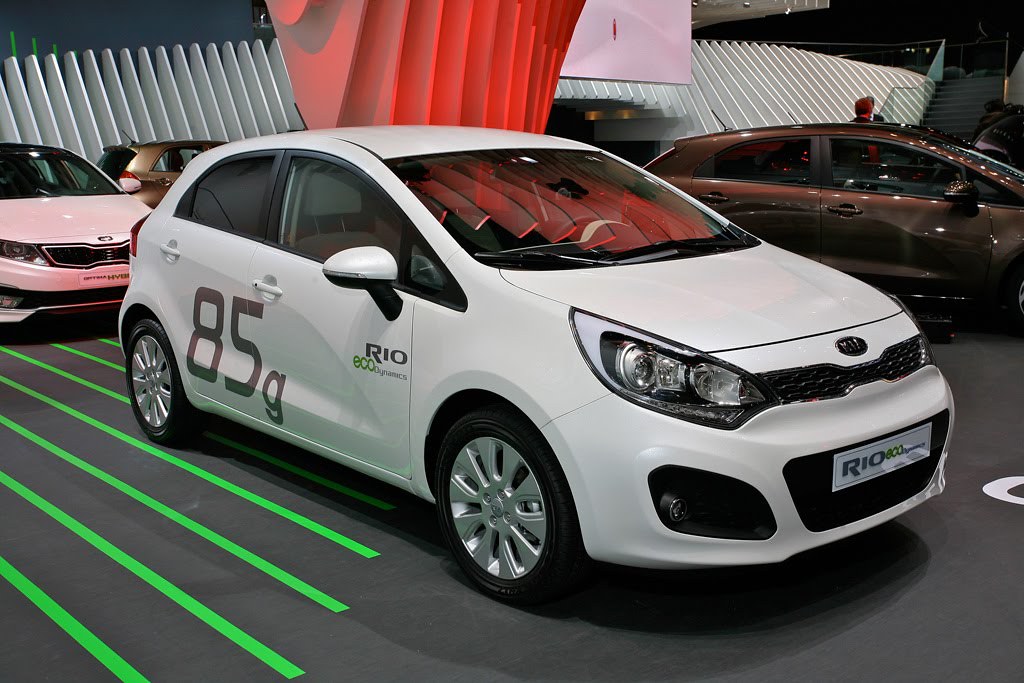
11. **Kia Rio**The Kia Rio, for all its intentions, has unfortunately landed many owners squarely in the realm of buyer’s remorse. It’s a car that, on paper, ticks some important boxes: affordability and efficiency are its well-known virtues, making it an attractive proposition for those seeking an economical ride. Yet, beneath this veneer of practicality, the Rio harbored a reputation for problems that could quickly outweigh its initial savings, transforming perceived value into palpable regret.
One of the most frequently cited issues that plagued the Kia Rio revolved around its engine. Owners often found themselves contending with problems like rough idling and persistent misfires. More often than not, these frustrating symptoms traced back to common culprits: issues with spark plugs or ignition coils. What begins as a minor hiccup can quickly escalate into a constant source of worry and unexpected trips to the mechanic, chipping away at the car’s initial affordability.
Beyond the engine’s reluctance to run smoothly, owners also found fault with the vehicle’s interior. Complaints about cheap interior quality were rampant, indicating that while the price was low, the materials and finish felt exactly that. This, combined with persistent comfort issues, meant that spending any significant time in the Rio could become an exercise in enduring, rather than enjoying, the journey.
Ultimately, the Kia Rio serves as a stark reminder that while a low entry price can be tempting, it often comes with hidden costs—not just in terms of repair bills for engine woes, but also in the daily grind of a less-than-pleasant driving environment. For many, the initial allure of affordability quickly faded into the bitter taste of regret, proving that some savings simply aren’t worth the compromises.
Car Model Information: 2019 Kia Rio LX
Name: Kia Rio
Caption: Fourth generation Kia Rio
Manufacturer: Kia
Aka: Kia Pride (2005–2017),Kia K2 (China; 2011–2020)
Production: November 1999 – December 2023
ModelYears: 2001–2023 (North America)
BodyStyle: hatchback
Class: Subcompact car
Layout: Front-engine, front-wheel-drive layout
Predecessor: Kia Pride,Kia Avella
Successor: Kia K3 (BL7),Kia Soluto
Categories: 2000s cars, 2010s cars, Articles containing Korean-language text, Articles with short description, CS1 Croatian-language sources (hr)
Summary: The Kia Rio is a subcompact car manufactured by Kia from 1999 to 2023. Body styles have included a three and five-door hatchback and four-door sedan, equipped with inline-four gasoline and diesel engines, and front-wheel drive. The Rio replaced the first generation Pride—a rebadged version of the Ford Festiva—and the Avella, a subcompact sold as a Ford in some markets. A second generation was introduced in 2005 in Europe and in 2006 in North America, sharing its platform with the Hyundai Accent, a subcompact manufactured by its sister Hyundai Motor Company in South Korea. In August 2023, the K3 was introduced as its successor in several markets such as Mexico and the GCC countries.
Get more information about: Kia Rio
Buying a high-performing used car >>>
Brand: Kia Model: Rio
Price: $11,469 Mileage: 49,180 mi.
Read more about: Navigating EV Battery Warranties: A Comprehensive Guide to Longest Coverage for Peace of Mind
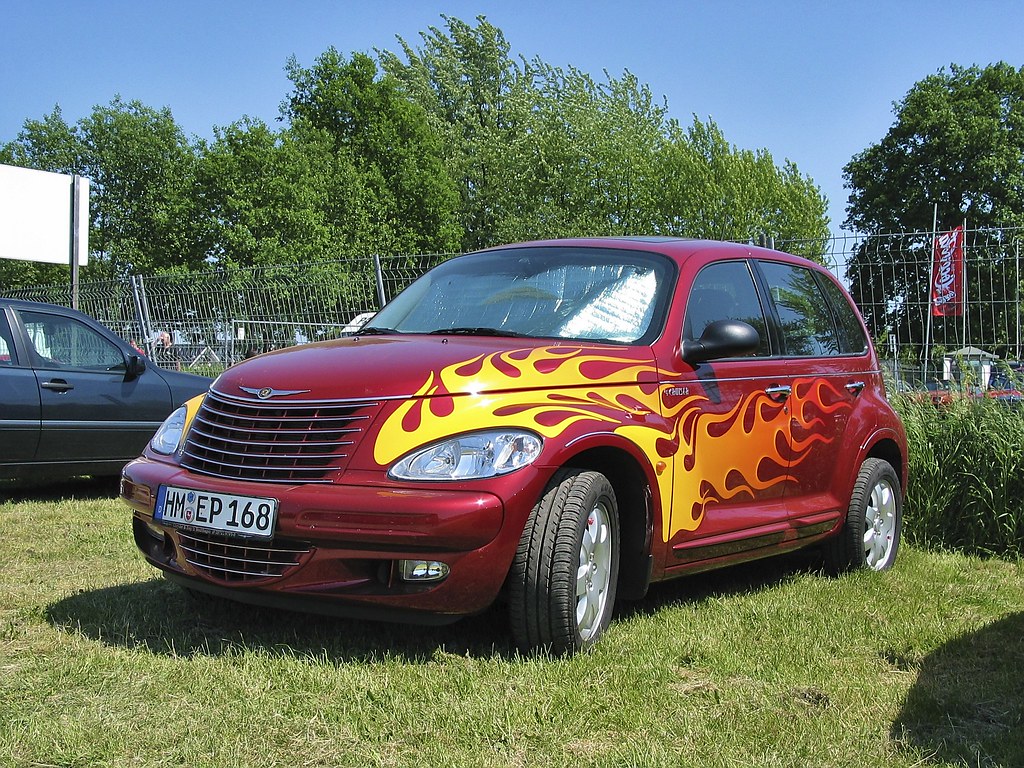
12. **Chrysler PT Cruiser**Oh, the Chrysler PT Cruiser. Where do we even begin with this one? This compact car arrived with a bold, retro style that, to put it mildly, was incredibly polarizing. People either loved it or, more often, loved to hate it, sparking endless debates about its aesthetic choices. But here’s the unvarnished truth: its looks were far from the only things wrong with this vehicle, and for many owners, the problems went much, much deeper than mere aesthetics.
Beneath that distinctive, divisive exterior lay a host of engine issues that could generously be described as “galore.” Owners grappled with everything from unsettling engine stalling to rough idling that made you question the car’s very will to live. Overheating was a common and dangerous complaint, as was the dreaded head gasket failure, which could lead to catastrophic and incredibly costly repairs, turning a quirky ride into a financial black hole.
And the Cruiser’s woes didn’t stop at the engine bay. Transmission problems were a frequent source of grief, delivering inconsistent shifts and sometimes outright failure that left drivers stranded. Electrical gremlins also ran wild, affecting various systems and adding another layer of unpredictable frustration. It seemed nearly every critical component had its own set of persistent, maddening issues, piling on the reasons for owner regret.
For many who bought a Chrysler PT Cruiser, the initial novelty of its unique design quickly dissolved into a pervasive sense of buyer’s remorse, stemming from a seemingly endless cycle of breakdowns and expensive repairs. It was a car that truly tested the patience and the wallet, proving that sometimes, distinctive style comes at the unbearable cost of fundamental reliability.
Car Model Information: 2023 Honda Civic Sport
Name: Chrysler PT Cruiser
Manufacturer: Chrysler
ModelCode: PT,PG
Production: 2000–2010
ModelYears: 2001–2010
Assembly: Toluca, Mexico State
Designer: Bryan Nesbitt
Class: Compact car
BodyStyle: convertible
Platform: Chrysler PT platform
Related: Dodge SRT4,Dodge Neon
Predecessor: Dodge Neon
Successor: Lancia Delta#Third generation
Layout: Front-engine, front-wheel-drive layout
Engine: ubl
Transmission: Ultradrive#40TE
Wheelbase: 103 in
Abbr: on
Length: 168.8 in
Width: 67.1 in
Height: 63 in
Weight: 3123 lb
Categories: 2010s cars, All articles with unsourced statements, Articles with short description, Articles with unsourced statements from March 2018, Cars discontinued in 2010
Summary: The Chrysler PT Cruiser is a compact car that was built by the American company Chrysler from 2001 until 2010. Introduced as a five-door hatchback wagon, a two-door convertible variant was also made from 2005 until 2008.
Originally planned as a Plymouth model, the PT Cruiser was ultimately marketed as a Chrysler when Plymouth was discontinued. Intended to invoke 1930s aesthetics, the exterior of the PT Cruiser was designed by Bryan Nesbitt. The model received an intermediate facelift for the 2006 model year. Interior packaging was noted for its high roof, high h-point seating, and flexible cargo and passenger configurations enabled by a multi-level rear cargo shelf and rear seats a user could fold, tumble, or remove.
The PT Cruiser was produced in Mexico and Austria at the Toluca Car Assembly and Eurostar Automobilwerk factories respectively. By the end of production in July 2010, worldwide production had reached 1.35 million.
In its nameplate, PT stands for “Personal Transport” or “Personal Transportation.” PT was the PT Cruiser’s product code for the Mexican-made units.
Get more information about: Chrysler PT Cruiser
Buying a high-performing used car >>>
Brand: Chrysler Model: PT Cruiser
Price: $26,475 Mileage: 10,075 mi.
Read more about: Under the Hood Heroes: 16 Import Cars Mechanics Secretly Adore for Bulletproof Reliability and Unsung Value
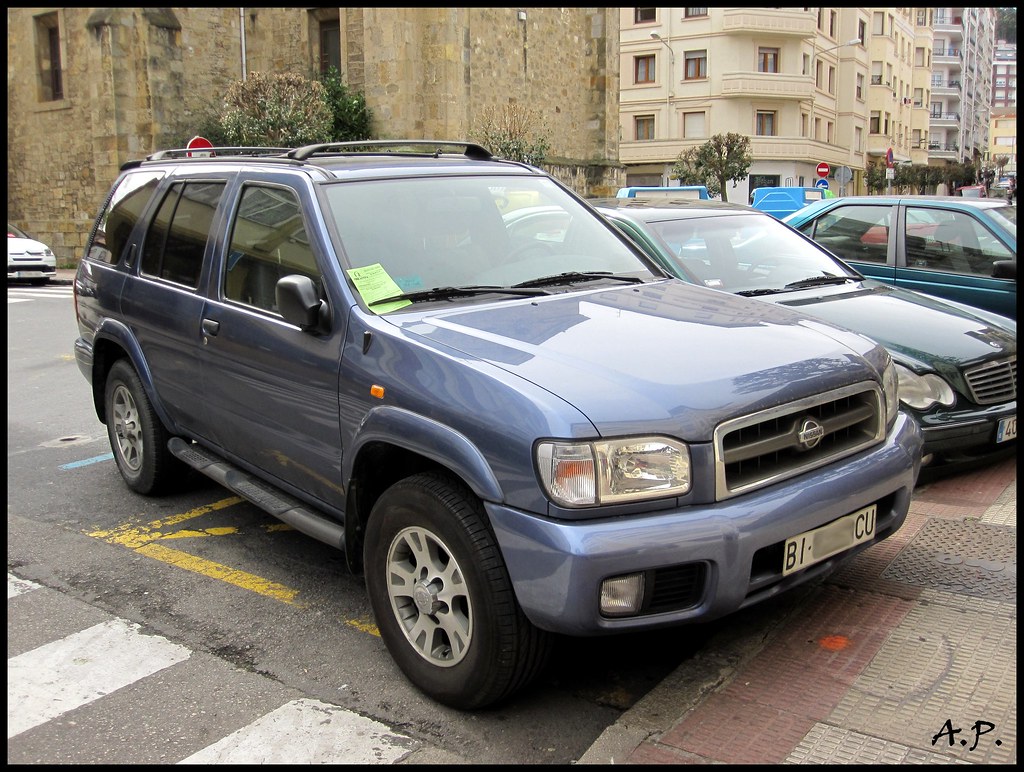
13. **Nissan Pathfinder**The Nissan Pathfinder, for years, has been a popular SUV, often chosen for its family-friendly size and perceived capability. Yet, despite its widespread appeal, it’s a vehicle known for having a significant number of problems that have left countless owners regretting their buying decisions. The promise of a reliable adventure vehicle often crumbled under the weight of recurring mechanical failures, creating a deep rift between expectation and reality.
A major point of contention and a familiar villain in the Nissan saga is, once again, the continuously variable transmission (CVT). This transmission technology, while promising efficiency, often delivered anything but a smooth experience in the Pathfinder. Owners reported a litany of issues including rough shifting, disconcerting shuddering, and, alarmingly, even overheating, especially under demanding conditions. To the profound chagrin of many, these CVT problems often culminated in the need for a full transmission replacement, a repair that can be financially crippling.
But the transmission was just one piece of the problematic puzzle. The Pathfinder also frustrated owners with a consistent stream of engine issues, detracting from its power and reliability. Additionally, fuel system problems were not uncommon, leading to further complications and costly garage visits. These issues collectively painted a picture of an SUV that, despite its popularity, consistently fell short on the fundamental engineering and quality control expected from a family vehicle.
For many Nissan Pathfinder owners, the journey turned into a frustrating sequence of mechanical breakdowns and unexpected expenses. What began as a hopeful purchase of a capable SUV often concluded with a lingering sense of regret, proving that popularity doesn’t always equate to peace of mind on the road.
Car Model Information: 2023 Nissan Pathfinder Platinum
Name: Nissan Pathfinder
Caption: 2023 Nissan Pathfinder Platinum 4WD (R53, US)
Manufacturer: Nissan
Production: 1985–present
Layout: unbulleted list
Chassis: unbulleted list
Predecessor: unbulleted list
Successor: unbulleted list
Categories: 1990s cars, 2000s cars, 2010s cars, 2020s cars, All-wheel-drive vehicles
Summary: The Nissan Pathfinder is a range of sport utility vehicles manufactured by Nissan since 1985. Until the third-generation model, the Pathfinder is based on Nissan’s compact pickup truck platform which it shares with the Navara/Frontier. The Pathfinder was marketed as the Nissan Terrano outside North America. Beginning in 2004, the vehicles were marketed globally as the Pathfinder. In 2012, the R52 series Pathfinder was released as a three-row crossover SUV based on the unibody Nissan D platform, moving away from the body-on-frame chassis format. The role of a mid-size body-on-frame SUV in Nissan’s global lineup was passed to the Terra/X-Terra, which was released in 2018 and based on the D23 series Navara.
Get more information about: Nissan Pathfinder
Buying a high-performing used car >>>
Brand: Nissan Model: Pathfinder
Price: $37,888 Mileage: 46,270 mi.
Read more about: Parking Lot Purgatory: 14 Vehicles Owners Deeply Regret After Years of Ownership
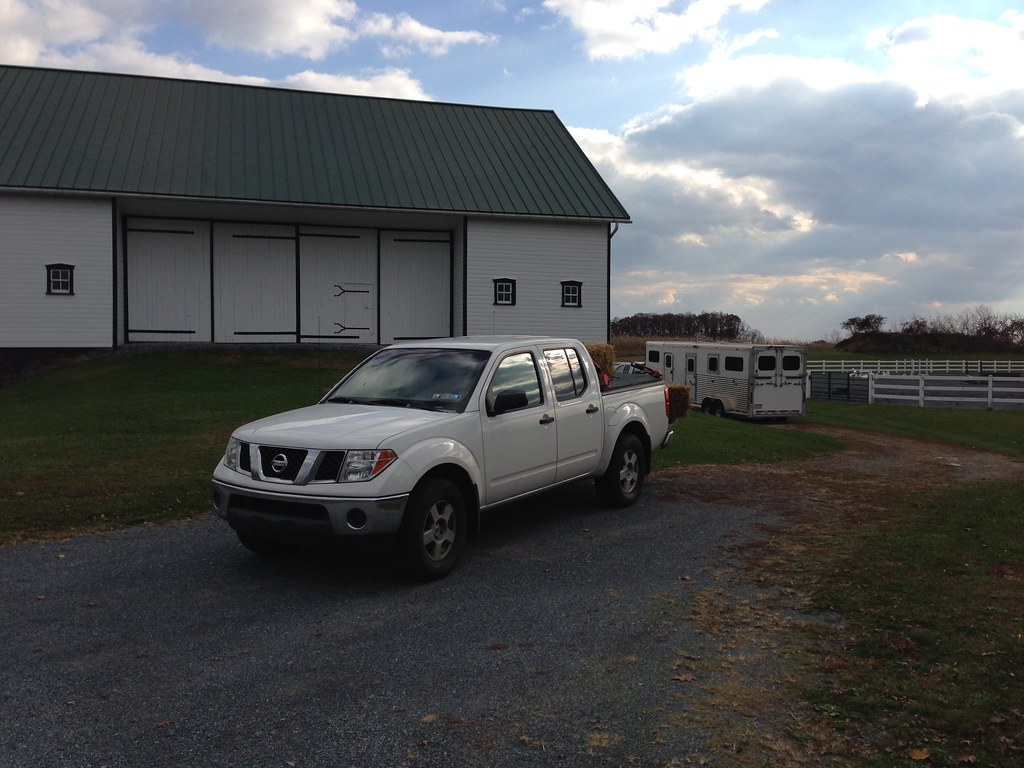
14. **Nissan Frontier**When you think of a mid-size pickup truck, you envision a reliable workhorse, something tough and dependable that can handle whatever you throw at it. The Nissan Frontier, however, for many owners, particularly those who took home models from 2005 to 2010, became the antithesis of this ideal. It’s a truck that spawned so many problems it left owners literally shaking their heads and pounding the dashboard with their fists in sheer frustration.
The notorious culprit for these specific model years was a design flaw that turned catastrophic: the radiator had a nasty habit of leaking coolant directly into the transmissions. This wasn’t just a minor oversight; it was a ticking time bomb for the powertrain. The insidious result was a predictable cascade of transmission failures, characterized by slipping gears, gut-wrenching, herky-jerky shifting, and ultimately, complete transmission failure that would leave the truck sidelined and its owner with an empty wallet.
As if a self-destructing transmission wasn’t enough to contend with, the Frontier also frustrated owners with a series of persistent engine and timing chain issues. These problems, often expensive and complex to rectify, further undermined the truck’s reliability and its ability to perform its core functions without constant worry. It seemed that nearly every major mechanical system had a propensity to fail, turning a rugged vehicle into a source of endless aggravation.
For many who invested in a Nissan Frontier from this problematic era, the dream of owning a dependable pickup quickly dissolved into a nightmarish cycle of repairs and regret. It stands as a stark reminder that even robust-looking vehicles can harbor critical design flaws that make them a truly disastrous purchase, leaving owners with nothing but frustration and an expensive lesson learned.
Car Model Information: 2017 Nissan Frontier SV-I4
Categories: All set index articles, Articles with short description, Nissan vehicles, Set index articles on cars, Short description is different from Wikidata
Summary: The Nissan Frontier is a nameplate used on three different pickup truck models by Nissan:
Nissan Frontier (international), an alternative nameplate for the NP300/Navara on some markets.
Nissan Frontier (North America), a rebadged NP300/Navara from 1997 to 2021, then became a separate model since 2021.
Nissan Frontier Pro, a rebadged Dongfeng Z9 that will be available from 2025. Available as both a diesel and plug-in hybrid, with the latter being the initial variant.
Get more information about: Nissan Frontier
Buying a high-performing used car >>>
Brand: NISSAN Model: FRONTIER
Price: $17,435 Mileage: 63,351 mi.
Read more about: Beyond the Road: Unpacking the Complex Journey of EV Battery Recycling and Its Future
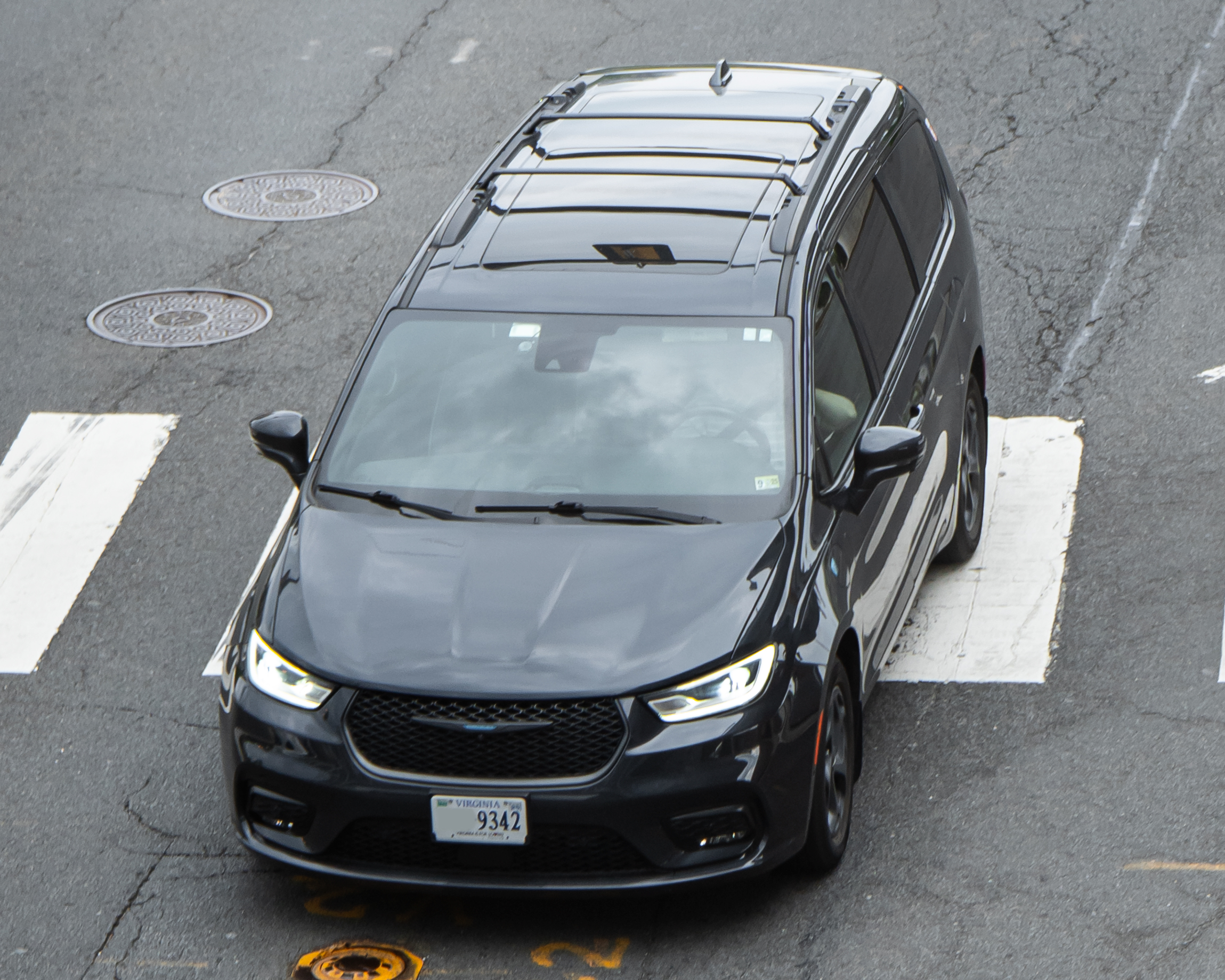
15. **Chrysler Pacifica Hybrid**The Chrysler Pacifica Hybrid entered the market with a compelling promise: a popular minivan that delivered the ultimate blend of family practicality and impressive fuel efficiency, thanks to its plug-in hybrid powertrain. On paper, it sounded like the perfect modern solution for eco-conscious families. However, as many owners quickly discovered, the innovative technology brought with it a host of problematic issues, raising a critical question: was the fuel efficiency truly enough to offset the persistent battery and electrical nightmares? For a resounding number of owners, the answer was a definitive “No.”
The core of the Pacifica Hybrid’s troubles lay precisely where its innovation was most touted: the battery and electrical systems. Owners reported a litany of frustrating and concerning issues, including chronic battery drain, making the “plug-in” aspect a constant source of anxiety. Inconsistent all-electric range meant that the vehicle rarely lived up to its promised efficiency, and, in the worst cases, outright battery failure left owners with massively expensive repair bills and a feeling of betrayal from their “green” purchase.
Adding to these significant powertrain woes were persistent problems with the electric continuous variable transmission (eCVT). This complex transmission, tasked with seamlessly blending electric and gasoline power, often failed to deliver on its promise of smooth operation. Owners experienced rough shifts and unreliable performance, further detracting from the supposed refinement of a modern hybrid. It seemed that every layer of advanced technology introduced a new point of failure, rather than seamless integration.
The cumulative effect of these widespread issues ensured that while the Chrysler Pacifica Hybrid might have looked like a futuristic solution, its real-world reliability often fell short. For those who bought into its eco-friendly promise, the constant stream of electrical and battery problems, coupled with transmission issues, created a deep sense of buyer’s remorse. It stands as a prime example of how ambitious technology, when not thoroughly refined, can lead to a long list of owner regrets.
***
So, why are so many modern vehicles, even from historically reputable brands, increasingly struggling with reliability? It’s a multi-faceted problem driven by several key factors that converge to create these dealership disasters. The relentless push for increasing technological complexity means cars are now essentially computers on wheels, packed with millions of lines of code, intricate electronic systems, and advanced driver-assistance features. While incredible in theory, each new piece of tech is a potential point of failure, adding layers of complexity that can break down.
Then there’s the intense pressure of aggressive innovation cycles. Manufacturers are racing to introduce cutting-edge features and entirely new models at a breathtaking pace, sometimes before rigorous long-term testing can reveal all the potential flaws and weaknesses. This desire to be first to market often means customers, unfortunately, become the unwitting beta testers for new, unproven technologies. Finally, global supply chain vulnerabilities and relentless cost-cutting measures can sometimes lead to inconsistent component quality, even within the same vehicle, meaning a part that was perfectly fine last year might be problematic this year.
Car Model Information: 2023 Honda Civic Sport
Name: Chrysler Pacifica (RU)
Manufacturer: Chrysler (automotive brand)
Aka: Chrysler Voyager,Chrysler Grand Caravan (Canada, 2021–present)
Production: 2016–present
ModelYears: 2017–present
Assembly: Windsor, Ontario
Designer: Irina Zavatski,Winnie Cheung (interior)
Class: Minivan
BodyStyle: 5-door minivan
Layout: Front-engine, front-wheel drive,Front-engine, all-wheel drive
Platform: Compact U.S. Wide platform
Related: Chrysler 200#Second generation (2014–)
Engine: Chrysler Pentastar engine#3.6L,FCA Global Medium Engine
Motor: 2x electric motors (SiEVT main motor & motor generator; PHEV)
Transmission: ZF 9HP transmission,automatic transmission,Continuously variable transmission
Drivetrain: PHEV
ElectricRange: cvt
Battery: val,lithium-ion battery
Wheelbase: 3089 mm
Abbr: on
Order: flip (hybrid)
Length: 203.6 in
Width: 79.6 in
Height: convert
Weight: {{convert,1964,kg,lb,abbr=on,order=flip
Predecessor: Chrysler minivans (RT)
Categories: 2010s cars, All-wheel-drive vehicles, Articles with short description, CS1 Spanish-language sources (es), Cars introduced in 2016
Summary: The Chrysler Pacifica is a minivan produced by the Chrysler division of Stellantis since the 2017 model year. Replacing the Chrysler Town & Country, the Pacifica is the sixth generation of Chrysler minivans, taking its name from the 2004–2008 product line. Along with serving as the first minivan with a plug-in hybrid drivetrain, the Pacifica has also served as a platform for autonomous vehicle development.
For the 2020 model year, Chrysler repackaged the lower-trim versions of the Pacifica as a revived Chrysler Voyager, largely to expand fleet sales of the model line; following the retirement of the Dodge Grand Caravan, the Chrysler Voyager was introduced in Canada for 2021 as the Chrysler Grand Caravan (moving the nameplate from Dodge to Chrysler after 36 years). Following the retirement of the Chrysler 300 sedan, the Pacifica/Voyager/Grand Caravan is currently the only vehicle marketed by Chrysler.
Chrysler has assembled the Pacifica minivan (and the Voyager/Grand Caravan) in its Windsor Assembly facility in Ontario (home to Chrysler minivan assembly since 1983).
Get more information about: Chrysler Pacifica (minivan)
Buying a high-performing used car >>>
Brand: Chrysler Model: Pacifica Hybrid
Price: $26,475 Mileage: 10,075 mi.
Read more about: Parking Lot Purgatory: 14 Vehicles Owners Deeply Regret After Years of Ownership
But here’s the crucial part: you don’t have to become another regretful car owner! You can empower yourself with knowledge and make a truly informed decision, transforming yourself from a potential victim into a savvy buyer. Before you even set foot in a dealership, you absolutely must do your homework. Dive deep into actual owner reviews and dedicated online forums. These platforms offer raw, unfiltered insights into recurring problems, their severity, and how responsive manufacturers and dealerships truly are. Look for patterns of complaints, not just isolated anecdotes, because consistent feedback is a powerful indicator of a vehicle’s true long-term reliability. Learning from other people’s costly mistakes is one of the smartest ways to ensure you drive away happy, not heartbroken. After all, your hard-earned money deserves a car that delivers on its promises, not just its hype.


